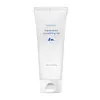What's inside
What's inside
 Key Ingredients
Key Ingredients

 Benefits
Benefits

 Concerns
Concerns

No concerns
 Ingredients Side-by-side
Ingredients Side-by-side

Aloe Barbadensis Leaf Juice
Skin ConditioningAloe Barbadensis Leaf Extract
EmollientCitrus Limon Fruit Extract
MaskingHouttuynia Cordata Extract
Skin ConditioningNelumbo Nucifera Extract
Skin ConditioningArtemisia Princeps Extract
Skin ConditioningCucumis Sativus Fruit Extract
EmollientZea Mays Silk Extract
Skin ConditioningSalvia Officinalis Extract
AntimicrobialCitrullus Lanatus Fruit Extract
Skin ConditioningChamomilla Vulgaris Extract
Skin ProtectingLaminaria Digitata Extract
Skin ProtectingWater
Skin ConditioningButylene Glycol
HumectantGlycerin
HumectantSodium Polyacrylate
AbsorbentCarbomer
Emulsion StabilisingDisodium EDTA
PEG-60 Hydrogenated Castor Oil
EmulsifyingPentylene Glycol
Skin ConditioningPropanediol
Solvent1,2-Hexanediol
Skin ConditioningSodium Benzoate
MaskingCitric Acid
BufferingGlyceryl Acetate
Skin ConditioningEthanolamine
BufferingCitral
PerfumingLimonene
PerfumingLinalool
PerfumingButylphenyl Methylpropional
PerfumingAloe Barbadensis Leaf Juice, Aloe Barbadensis Leaf Extract, Citrus Limon Fruit Extract, Houttuynia Cordata Extract, Nelumbo Nucifera Extract, Artemisia Princeps Extract, Cucumis Sativus Fruit Extract, Zea Mays Silk Extract, Salvia Officinalis Extract, Citrullus Lanatus Fruit Extract, Chamomilla Vulgaris Extract, Laminaria Digitata Extract, Water, Butylene Glycol, Glycerin, Sodium Polyacrylate, Carbomer, Disodium EDTA, PEG-60 Hydrogenated Castor Oil, Pentylene Glycol, Propanediol, 1,2-Hexanediol, Sodium Benzoate, Citric Acid, Glyceryl Acetate, Ethanolamine, Citral, Limonene, Linalool, Butylphenyl Methylpropional
Water
Skin ConditioningGlycerin
HumectantButylene Glycol
Humectant1,2-Hexanediol
Skin ConditioningCarbomer
Emulsion StabilisingPolyglycerin-3
HumectantTromethamine
BufferingEucalyptus Globulus Leaf Extract
PerfumingMentha Arvensis Extract
MaskingAloe Barbadensis Leaf Extract
EmollientCymbopogon Citratus Extract
Skin ConditioningPanthenol
Skin ConditioningEthylhexylglycerin
Skin ConditioningTremella Fuciformis Polysaccharide
Emulsion StabilisingHydrolyzed Hyaluronic Acid
HumectantDisodium EDTA
Sodium Hyaluronate
HumectantErythritol
HumectantWater, Glycerin, Butylene Glycol, 1,2-Hexanediol, Carbomer, Polyglycerin-3, Tromethamine, Eucalyptus Globulus Leaf Extract, Mentha Arvensis Extract, Aloe Barbadensis Leaf Extract, Cymbopogon Citratus Extract, Panthenol, Ethylhexylglycerin, Tremella Fuciformis Polysaccharide, Hydrolyzed Hyaluronic Acid, Disodium EDTA, Sodium Hyaluronate, Erythritol
 Reviews
Reviews

Ingredients Explained
These ingredients are found in both products.
Ingredients higher up in an ingredient list are typically present in a larger amount.
1,2-Hexanediol is a synthetic liquid and another multi-functional powerhouse.
It is a:
- Humectant, drawing moisture into the skin
- Emollient, helping to soften skin
- Solvent, dispersing and stabilizing formulas
- Preservative booster, enhancing the antimicrobial activity of other preservatives
Aloe Barbadensis Leaf Extract is an extract of the leaves of the aloe, Aloe barbadensis, Liliaceae.
Aloe is one of the most well-known natural soothing ingredients, and for good reason. It’s full of water and has a cooling, calming effect on the skin, especially when it’s sunburned, itchy, or irritated. Aloe also helps your skin stay hydrated and smooth by mimicking what healthy skin naturally produces. On top of that, it contains vitamins and nutrients that support skin recovery.
It doesn’t protect you from the sun, but it can help your skin bounce back after too much time in it.
Let’s get into the details:
Aloe contains antioxidant Vitamins A, C, and E, which help fight off free radicals (unstable molecules from things like pollution that can damage your skin).
It’s also rich in polysaccharides, which are natural sugars that help hydrate the skin by acting like the skin’s own moisturizing agents. These, along with other sugars like monosaccharides, help form a protective barrier that locks in moisture.
Aloe works as both a humectant and an emollient. That means it draws water into the skin (humectant) and helps trap it there (emollient), making it an effective natural moisturizer.
You’ll also find a mix of other skin-supporting ingredients in aloe, including folic acid, choline, calcium, amino acids, fatty acids, and even Vitamin B12.
Out of the 420+ species of aloe, Aloe barbadensis is the most widely used in skincare products thanks to its gentle yet effective properties.
There are over 420 species of aloe but Aloe Barbadensis is the most commonly used for topical products.
Learn more about Aloe Barbadensis Leaf ExtractButylene Glycol (or BG) is used within cosmetic products for a few different reasons:
Overall, Butylene Glycol is a safe and well-rounded ingredient that works well with other ingredients.
Though this ingredient works well with most skin types, some people with sensitive skin may experience a reaction such as allergic rashes, closed comedones, or itchiness.
Learn more about Butylene GlycolCarbomer is a polymer of acrylic acid. Its main role is to create a gel consistency.
A high amount of carbomer can cause pilling or balling up of products. Don't worry, most products contain 1% or less of carbomer.
Disodium EDTA plays a role in making products more stable by aiding other preservatives.
It is a chelating agent, meaning it neutralizes metal ions that may be found in a product.
Disodium EDTA is a salt of edetic acid and is found to be safe in cosmetic ingredients.
Learn more about Disodium EDTAGlycerin is already naturally found in your skin. It helps moisturize and protect your skin.
A study from 2016 found glycerin to be more effective as a humectant than AHAs and hyaluronic acid.
As a humectant, it helps the skin stay hydrated by pulling moisture to your skin. The low molecular weight of glycerin allows it to pull moisture into the deeper layers of your skin.
Hydrated skin improves your skin barrier; Your skin barrier helps protect against irritants and bacteria.
Glycerin has also been found to have antimicrobial and antiviral properties. Due to these properties, glycerin is often used in wound and burn treatments.
In cosmetics, glycerin is usually derived from plants such as soybean or palm. However, it can also be sourced from animals, such as tallow or animal fat.
This ingredient is organic, colorless, odorless, and non-toxic.
Glycerin is the name for this ingredient in American English. British English uses Glycerol/Glycerine.
Learn more about GlycerinWater. It's the most common cosmetic ingredient of all. You'll usually see it at the top of ingredient lists, meaning that it makes up the largest part of the product.
So why is it so popular? Water most often acts as a solvent - this means that it helps dissolve other ingredients into the formulation.
You'll also recognize water as that liquid we all need to stay alive. If you see this, drink a glass of water. Stay hydrated!
Learn more about Water